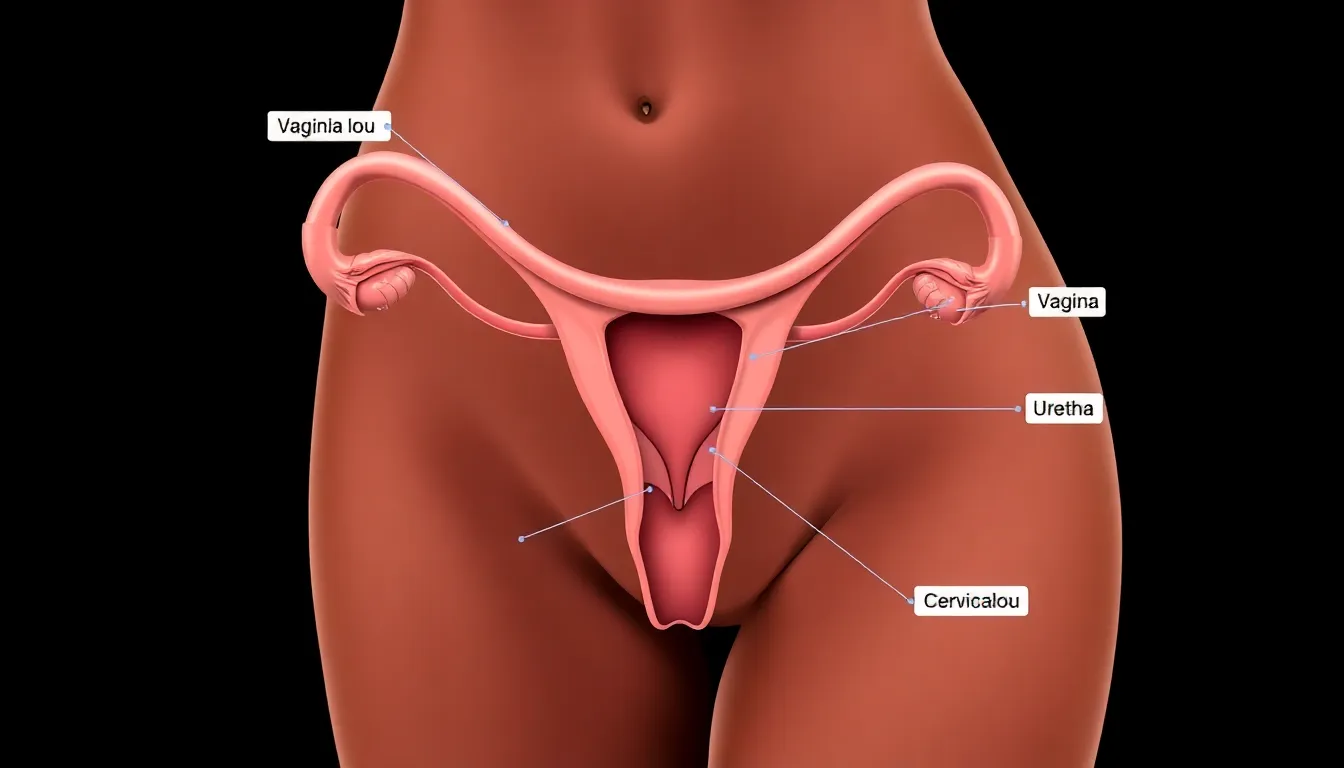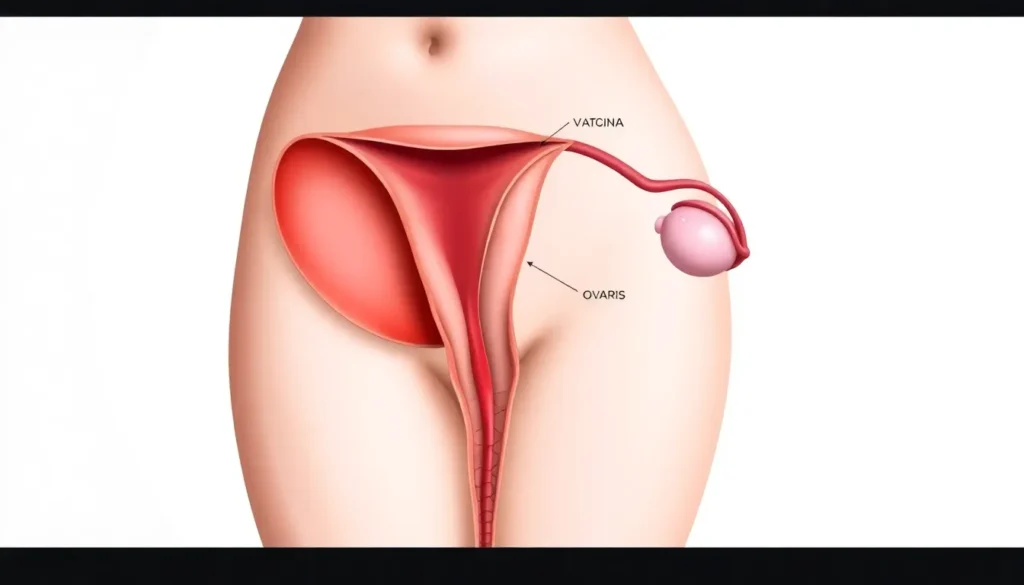Understanding female anatomy can be both fascinating and complex. Many people often wonder about the number of openings in a woman’s body, which can lead to confusion and misconceptions. This topic isn’t just a matter of biology; it reflects broader discussions about health and sexuality.
Women have multiple anatomical openings that serve various functions, from the reproductive system to the urinary tract. Each hole plays a crucial role in overall health and well-being. By exploring this subject, one can gain a clearer picture of female anatomy and appreciate its intricacies. Let’s dive into the details and clarify how many holes women actually have.
Table of Contents
ToggleUnderstanding Female Anatomy
Understanding female anatomy includes recognizing the various openings that exist in a woman’s body. These anatomical structures play critical roles in health, reproduction, and overall wellbeing.
Overview of Female Reproductive System
The female reproductive system consists of several key components. These include the vagina, uterus, fallopian tubes, and ovaries. Each structure contributes to reproduction and menstrual health. The vagina serves as both a passageway for menstrual fluid and as the birth canal, while the uterus supports embryo implantation and fetal development. Fallopian tubes transport eggs from the ovaries to the uterus, and ovaries produce eggs and hormones.
Key Structures and Their Functions
Key structures within female anatomy perform distinct functions:
- Vagina: Functions as a passage for menstrual fluid, a birth canal, and an entrance for sperm.
- Uterus: Houses and nourishes a developing fetus during pregnancy.
- Fallopian Tubes: Facilitate the movement of eggs and provide a site for fertilization.
- Ovaries: Produce eggs and secrete hormones like estrogen and progesterone.
Understanding these structures enhances awareness of female health and reproductive processes.
The Concept of “Holes” in Female Anatomy

Female anatomy includes several important anatomical openings, each serving distinct physiological roles. Recognizing and understanding these openings is essential for appreciating female health and reproductive function.
Definition of Anatomical Openings
Anatomical openings in females refer to specific structures that facilitate various bodily functions. These include:
- Vagina: Serves as a passageway for menstrual fluid and acts as the birth canal during childbirth.
- Urethra: Channels urine from the bladder to outside the body.
- Anus: Provides an exit for digestive waste.
- Cervical Canal: Connects the uterus to the vagina; allows menstrual fluid to exit and sperm to enter.
Each of these openings plays a crucial role in reproductive health, sexual function, and waste elimination.
Common Misconceptions
Several misconceptions surround the concept of anatomical openings in females. These include:
- Misunderstanding of Number: Many believe females have fewer openings than they do; in reality, there are at least three primary openings in the genital and anal areas.
- Confusion Between Structures: Some assume the vagina and the urethra are the same, but they serve different functions and have separate anatomical pathways.
- Neglect of External Structures: Individuals often overlook the significance of external anatomy, such as the vulva, which encompasses various structures including the clitoris and labia.
Clarifying these misconceptions fosters a better understanding of female anatomy and promotes informed discussions about health and sexuality.
Different Openings in Female Anatomy
Female anatomy features several distinct openings, each serving specific functions in health and sexuality. Understanding these openings contributes to a comprehensive awareness of female biology.
The Vaginal Canal
The vaginal canal is a muscular tube extending from the vulva to the cervix. It serves three main purposes: allowing menstrual fluid to exit the body, functioning as a passage for childbirth, and accommodating the penis during sexual intercourse. The vaginal canal is lined with mucous membranes that support lubrication and protect against infections.
The Urethra
The urethra is a narrow tube that connects the bladder to the external environment. In females, it measures about 4 centimeters in length. Its primary function is to transport urine out of the body. Misconceptions often arise about the urethra’s location, as its proximity to the vaginal opening may lead to confusion with the vaginal canal.
The Anus
The anus is the terminal opening of the digestive tract, positioned at the end of the rectum. It plays a crucial role in waste elimination. The anal sphincters, consisting of internal and external muscles, control the release of stool. Women should understand this opening for overall health, as it can also be a site of sexual activity or medical concerns.
Implications of Understanding Female Anatomy
Understanding female anatomy significantly impacts health, wellness, and education. Clarity about anatomical structures fosters informed discussions among individuals, families, and health care providers.
Health and Wellness
Awareness of female anatomy influences health outcomes. Recognizing the functions of openings such as the vagina, urethra, and anus aids in maintaining reproductive health and preventing infections. Regular gynecological check-ups allow for early detection of abnormalities within the reproductive system. Knowledge about menstrual health, pelvic floor exercises, and hygiene practices contributes to overall wellness. Furthermore, understanding anatomical variations enhances awareness of individual health needs, encouraging women to engage actively in their health care decisions.
Sexual Education
Sexual education directly benefits from a clear comprehension of female anatomy. Educators empower individuals with accurate information about anatomy, fostering healthy attitudes toward sexuality. Addressing misconceptions, such as the differences between the vagina and urethra, ensures that individuals receive accurate knowledge about sexual health. Education about consent, safe sex practices, and reproductive rights builds a foundation for healthy relationships. Comprehensive sexual education incorporates discussions about female anatomy, promoting respect and understanding for women’s bodies and their diverse functions.
Understanding female anatomy is vital for promoting health and wellness. Recognizing the various anatomical openings not only clarifies misconceptions but also empowers women to take charge of their reproductive health. Each opening plays a unique role in bodily functions and overall well-being.
Awareness of these structures encourages informed discussions around health and sexuality. It’s essential to foster a respectful understanding of women’s bodies, which can lead to healthier relationships and better health care choices. Comprehensive education on female anatomy is key to achieving these goals and ensuring that women feel empowered in their health journeys.






